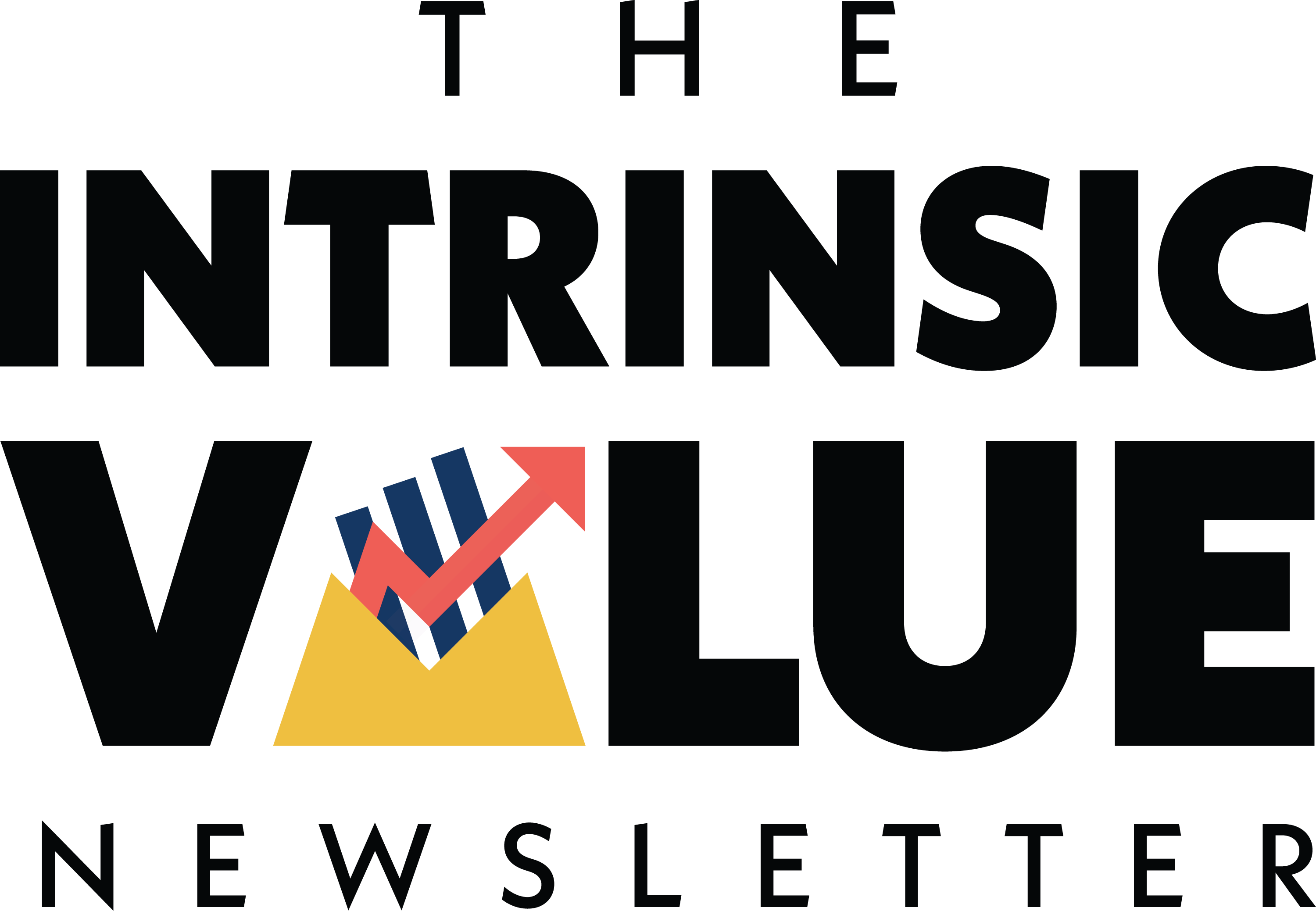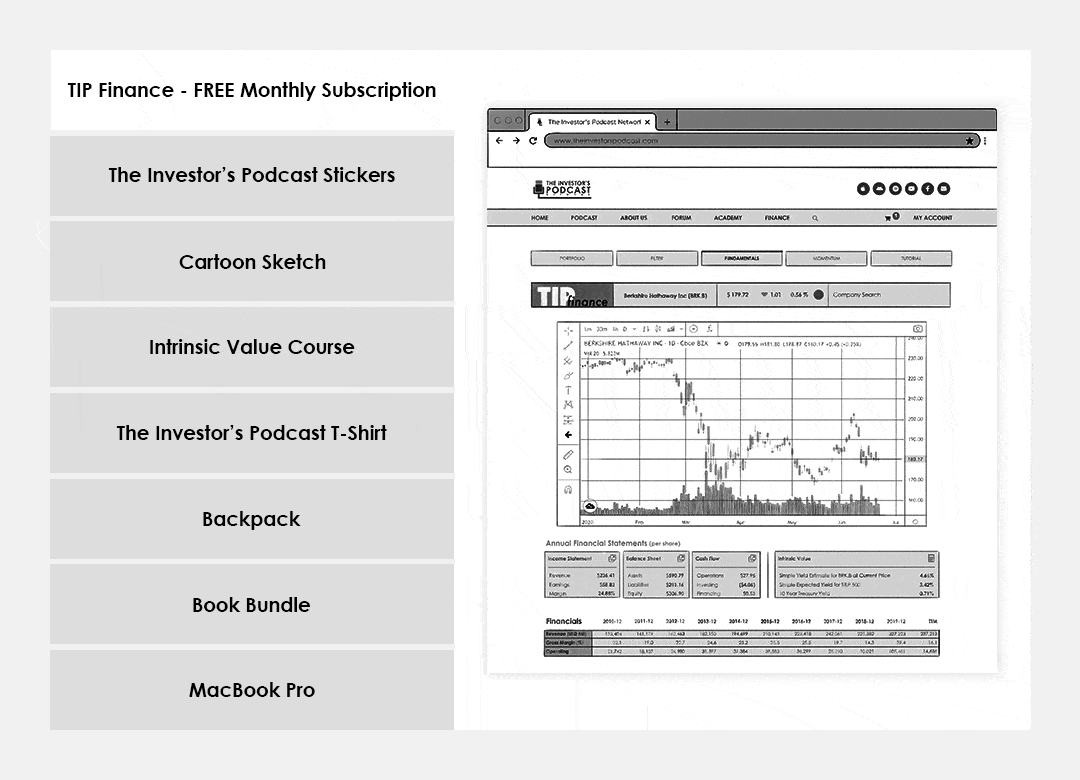Ingredients of a 100-Bagger
21 September 2022

Hi, The Investor’s Podcast Network Community!
Welcome back to We Study Markets!
It was a dizzying day in world news.
U.S. stocks got hammered a bit more as investors came to terms with the latest Federal Reserve interest-rate increase (more below).
At the same time, a threatened nuclear response in Ukraine from Vladimir Putin lifted prices for some safe-haven assets.
Both gold and the dollar rallied after comments from Putin that suggested an escalation of the war in Ukraine.
As anticipated, the Fed approved its third consecutive interest-rate increase of 75 basis points (0.75%). Indications of additional large rate increases were made as the central bank combats inflation that remains near a 40-year high.
Yields on U.S. government bonds rose after the Fed’s meeting. The 10-year Treasury note climbed as high as 3.604%, up from 3.571% on Tuesday (bond yields and prices move in opposite directions).
Here’s the market rundown:

*All prices as of market close at 4pm EST
Today, we’ll discuss further the Fed’s rate hike, JPMorgan’s CEO Jamie Dimon big warning about the economy, the fight for a distressed digital asset lender, and the key ingredients of a 100-bagger.
All this, and more, in just 5 minutes to read.
Let’s do it! ⬇️
Get smarter about valuing businesses in just a few minutes each week.
Get the weekly email that makes understanding intrinsic value
easy and enjoyable, for free.
IN THE NEWS
⤴️ Fed Hikes Rates By 0.75% For The 3rd Time In A Row (FT)
Explained:
- It’s hard to call a 75 basis point move unprecedented anymore, as the Federal Reserve has developed quite the knack for them of late. And another hike of this magnitude is expected at their next meeting. With this move, the federal funds (policy) rate will rise to a new range between 3% and 3.25%.
- The policy rate is expected to rise to 4.4% by the end of this year before peaking at 4.6% next year.
- Powell remains staunch in his commitment to taming inflation, saying in a press conference that interest rates would stay at a level where they handicap the economy “for some time.”
What to know:
- What stands out are the differing intermediate-term projections between the market and the Fed. While the Fed doesn’t plan to cut rates until at least 2024, financial markets expect that they will end up doing so by 0.5% in late 2023.
- Corresponding with higher rates and a weaker economy, officials now expect the unemployment rate to climb from 3.7% to 4.4% by next year.
- And the consensus view among economists is increasingly reflective of the U.S. slipping into a recession over the next year. Happy Fed Day.
⛈️ JP Morgan CEO Set To Warn Congress Of Economic Storm Clouds (Reuters)
Explained:
- JPMorgan Chase & Co’s (JPM) CEO Jamie Dimon is set to warn Congress of impending economic “storm clouds,” while other major bank leaders urge for governmental patience on longstanding regulatory issues.
- The U.S.’s seven largest banks on Wednesday and Thursday will highlight broadly their support for government initiatives and improved corporate diversity, in addition to their efforts to cut back on emissions.
- While consumer spending and a healthy labor market point to resilience, JPM’s Dimon is expected to discuss ongoing risks from supply chain disruptions, the war in Ukraine, broad inflation, and rising interest rates in the Congressional hearings, which all point to tough times ahead.
What to know:
- Citigroup’s (C) CEO said that current economic challenges are “no less daunting” than those posed during the pandemic.
- The Financial Services Committee is expected to question these CEOs on leading so-called “mega banks” and their continued merger activity that’s helped them grow even larger, despite the committee calling it “unlawful behavior.”
📝 Binance And FTX Make Bids For Bankrupt Digital Asset Lender Voyager (WSJ)
Explained:
- Crypto exchanges Binance and FTX have both made bids for the bankrupt digital-asset-lender Voyager Digital LTD.’s assets. Binance’s bid at $50 million comes in slightly higher than FTX’s, according to The Wall Street Journal.
- Voyager, which lent out customer deposits of cryptocurrencies in exchange for interest payments. was founded in 2019.
- At its peak, the firm had a market capitalization value of $3.9 billion, though by its bankruptcy filing last July, the company only had $5 billion in assets with $4.9 billion in liabilities.
What to know:
- FTX has become famous during the recent downturn in cryptoland for scooping up distressed assets from companies forced to restructure and/or raise cash.
- For Voyager, the company has seen its stock price fall 95% while frustrating customers who saw their withdrawal requests halted, thus leaving them unable to reclaim their deposits.
- Now, these same customers watch and wait to see how the bankruptcy proceedings will unfold, unsure how much, if any, of their funds will be returned.
DIVE DEEPER: HOW TO FIND 100-BAGGERS
After listening to a talk by legendary investor Chuck Akre in which he mentioned 100 to 1 in the Stock Market by Thomas Phelps, Christopher Mayer was inspired. So much so that he decided to write a book called 100 Baggers, which updated the research Phelps had done for the book on the markets before 1972.
We recently wrote about The Coffee Can Portfolio and mentioned Phelps’ book, and it intrigued us just as much as it did Chris Mayer.
Chris is the co-founder and portfolio manager for Bill Bonner’s Woodlock House Family Capital. He also wrote a newsletter for Bonner’s Agora Financial for over 15 years called Capital & Crisis.
A Bagger?
In his book One Up on Wall Street, Peter Lynch was one of the first to talk about a ten-bagger, which described a stock that earned ten times its original investment.
First of all, what is a bagger? It’s an expression from baseball where a base is referred to as a “bag.” A ten-bagger would be two home runs and a double.
Lynch made his career on the returns of several ten-baggers. Now, imagine a hundred-bagger. $10,000 would turn into $1 million, and finding one or two could fund a retirement.
Maybe they sound like the stuff of fairy tales, but Chris Mayer studied the characteristics of 100-bagger stocks and says you don’t need an MBA or a finance degree to find them.
Mr. Mayer used the period from 1962 to 2014 and studied 365 companies that were used to draw the conclusions in his book.
Even if you never pick a 100-bagger, learning their characteristics will greatly improve your investing results and help keep you away from sleepy stocks that are going nowhere.

Top Takeaways
- Invest in acorns — If you eventually want an oak, you need to buy acorns. The same is true if you hope for your stocks to return 100 to 1. From a mathematical perspective, you need to be buying acorns that can grow very large.Big companies are not necessarily bad investments, but they are unlikely to become 100 baggers. It’s doubtful a mature company will continue to see enough growth in its stock price to return 100 times your money.For example, the current market cap of Apple is $2.5 trillion dollars. Growing another 100 times would place its value significantly larger than the entire U.S. economy.There are approximately 4,000 domestic companies listed on U.S. exchanges, and approximately 30% are the acorns Mayer recommends studying. These are so-called “micro-caps” and among them is the next Amazon or Microsoft.We don’t want to look at unproven companies with unproven products and no sales, either. The 365 companies Mayer studied had median sales of $175 million.
- The twin engines — Not surprisingly, one thing the 100 baggers of the last 50 years have had in common is growth — in all dimensions. Mayer suggests you should invest in companies with a strong growth in sales, along with an increase in the valuation multiples.Growing sales along with an increase in the price to earnings multiple is something he calls the “twin engines.”Sales growth is the first engine that is essential for a stock to grow its valuation by a hundredfold. If the growing sales finds its way down to the bottom line and also increases net earnings, that is extra beneficial as it will likely result in turbocharging the valuation multiples quicker.This is not a necessity though. Consider, for example, Amazon. They have had tremendous growth in sales, but the earnings have lagged behind.We should be looking for companies with a disruptive product or service where the company is reinvesting its earnings to become even stronger in the long-term.High growth is generally rewarded with higher valuation multiples. This is the twin engines at work. However, beware of extremely high growth valuations. A company needs to achieve very high sales growth to compensate for high price to earnings multiples.Ideally, find companies that are growing sales at a rapid pace, but try not to pay too much for them so you can enjoy the twin engines of growth.

- Owner/Operators — According to Mayer, it is ultimately the management that creates the alchemy for 100 baggers. It is those who have mastered the art of evaluating the alchemist that the stock market rewards with gold.This means when it comes to investing, you should make sure that the operators, including the board of directors and CEO, have the right incentives for making the best decisions from the perspective of shareholders.You want the insiders to have significant skin in the game, such that, if the company performs poorly, their own financial well-being gets clobbered and if it thrives, so do their own fortunes.
- Coffee Can Portfolio — The Coffee Can Portfolio is a method dating back to when people placed their most valuable possessions in a coffee can and put it under the mattress or buried it in the back yard. We discussed the idea here, and the method for how to invest in hundred baggers is basically the same.Pick the best companies you can find and put them in your coffee can. The average hundred bagger required 26 years of holding before reaching its 100x status.If you examine any hundred bagger, there are generally multiple times the stock falls dramatically in price. The greatest investors say the greatest enemy to superior returns are ourselves and our own human traits including greed and fear.As Warren Buffett says, “the stock market is a device for transferring money from the impatient to the patient.” Be patient. Buy right and sit tight.
- Ignore the macro analysts — We hate to say this as newsletter writers, but if you are pursuing the hundred bagger strategy, you should ignore macro news — forget what the Fed is doing, Biden’s latest comments, or what is going on in Ukraine. Put blinders on and just use the time to analyze and find hundred baggers. Even in recessions or periods of high inflation and rising interest rates, these jewels will continue their journeys.The management of these companies only care about continuing to deliver on building great products and services, not factors outside their control.Timing the market is hard. Finding hundred baggers is as well. Don’t try to do both. Put your blinders on and focus on finding 100-baggers.
Wrapping Up
Investing in one or two 100-baggers can be life changing. It’s worth it to take the time and energy to analyze the characteristics that Mayer says are common to companies with these kinds of returns.
Mayer said if he had to re-write the book today, he would stress the two most important things are a high return on capital plus the ability to reinvest at similarly high rates of return.
The hidden “third ingredient” of 100-baggers is time. Think a couple of decades. One guy put a coffee can on his mantle to remind himself to hold for the long haul.
I like that Mayer starts the book writing about examples of regular everyday investors that have succeeded in finding 100-baggers.
Another active investor and trader for 30 years said, “I have come to the realization that this 100-bagger approach and philosophy is the way one should approach a lifetime of investing. If one could only receive the proper level of mentoring as a young man, to commit oneself to this course…If only I knew this when I started out, I would not only be wealthier, but my quality of life would have been vastly better through all those years.”
Readers — Have you read either 100 Baggers or 100 to 1 in the Stock Market?
Let us know what companies you think have a chance to be the next hundred bagger. Our returns are down for the year and we could use a little help!
SEE YOU NEXT TIME!

That’s it for today on We Study Markets!
See you later!
If you enjoyed the newsletter, keep an eye on your inbox for them on weekdays around 6pm EST, and if you have any feedback or topics you’d like us to discuss, simply respond to this email.








